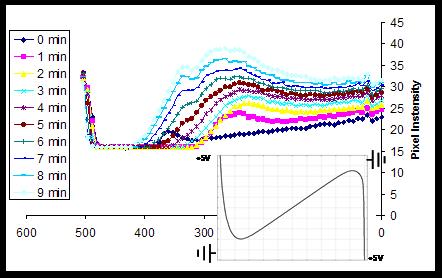233d Analytes Preconcentration and Separation in Nanofluidic Channels
Controlling the field distribution in fluidic channels allows to controllably manipulating dissolved analytes. Examples include the field gradient methods for focusing and preconcentration of charged molecules. In this study we suggest a method for shaping the electric field in nanofluidic channels that are fabricated on a Si wafer. The method exploits the conductivity of SiO2 that allows precise shaping of the externally applied field in the fluid. We present a theoretical model of this system that is based on Maxwell electrodynamics equations. The model has been experimentally verified by conducting an analyte focusing experiment in Si/SiO2 nanaofluidic channels (see the Figure below). Nanofluidic channels can have dimensions comparable to the electric double layer thickness. We analysed the double layer effect on the transport of electric current, analyte electrophoresis and electroosmotic flow. We have shown that very narrow channels exhibit unique features (e.g., ion selecvtivity) that disappear with increasing the cross-sectional dimension.
